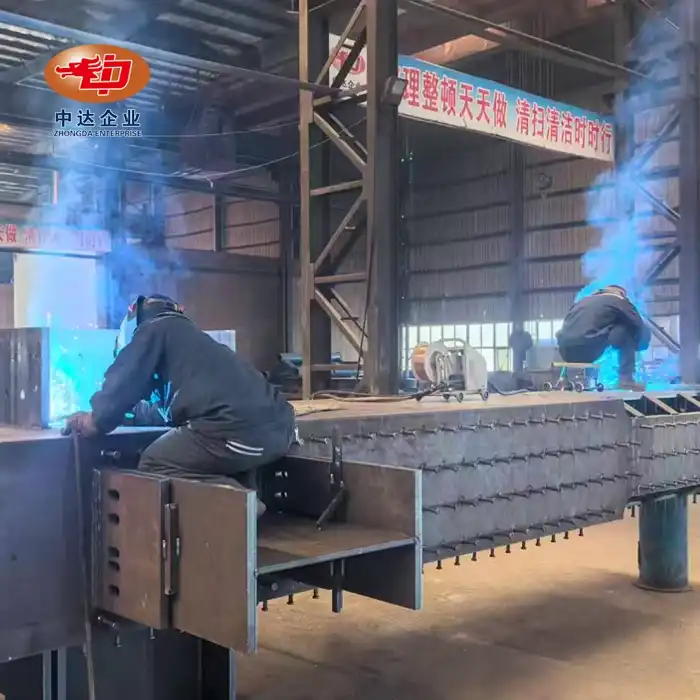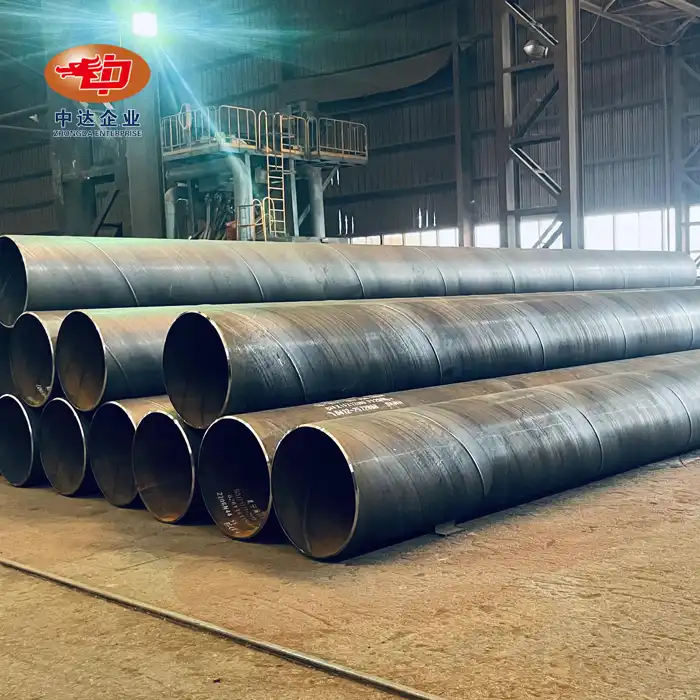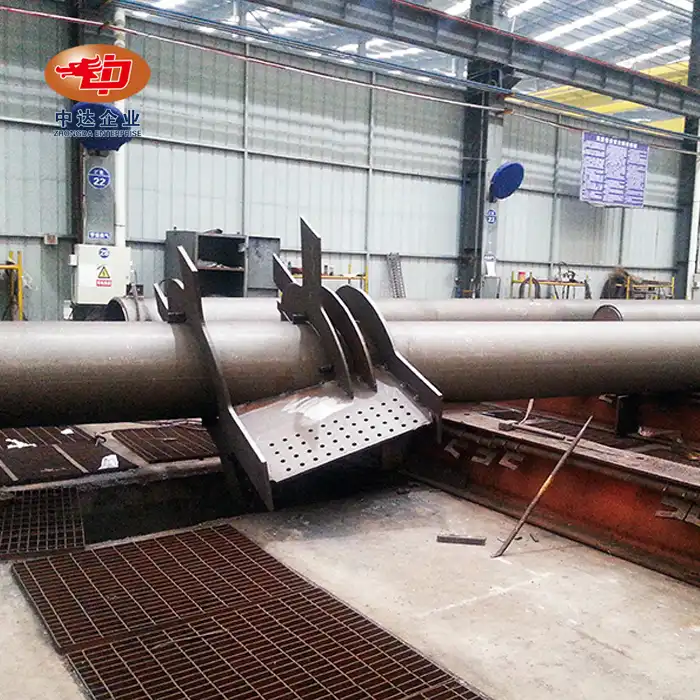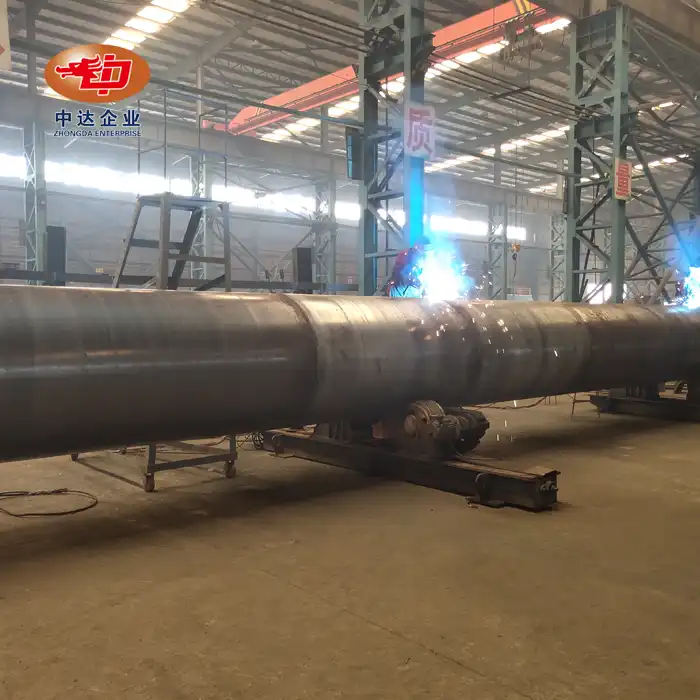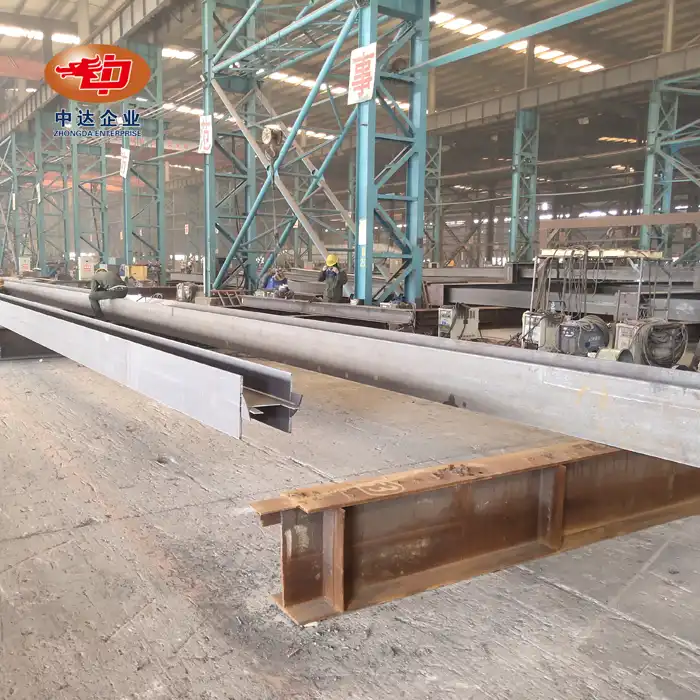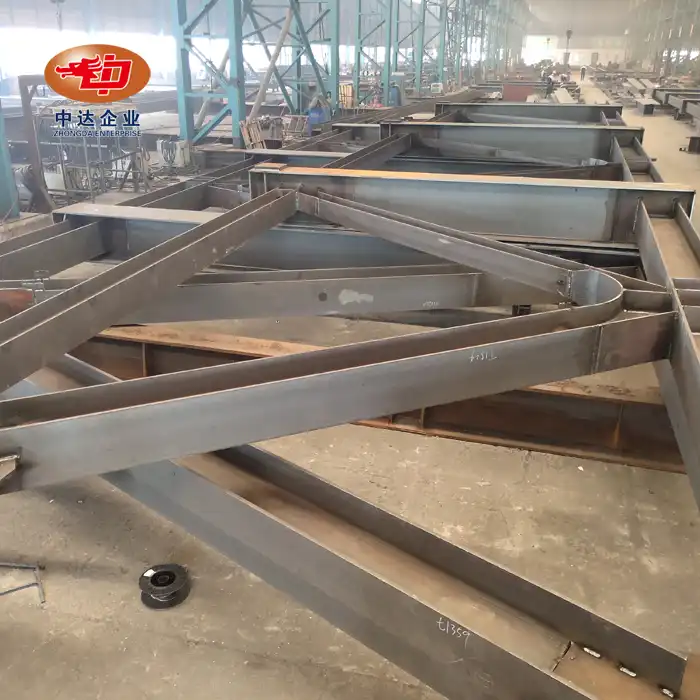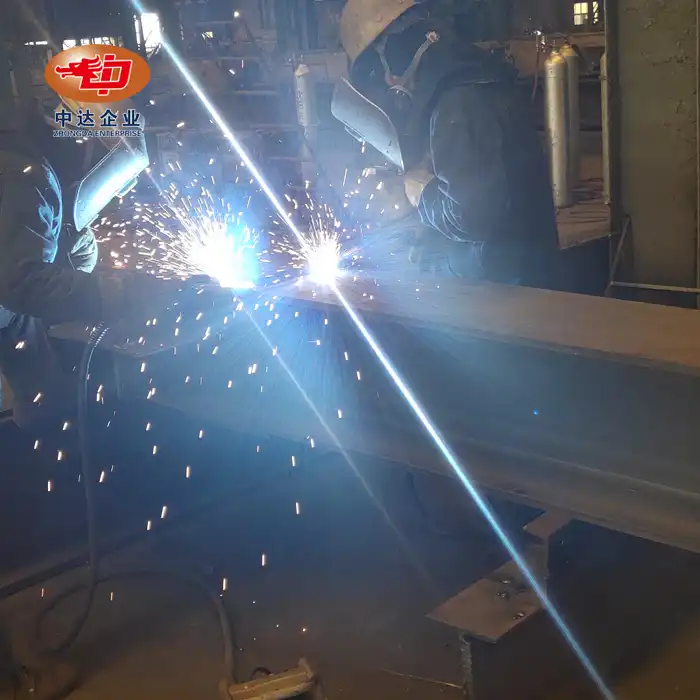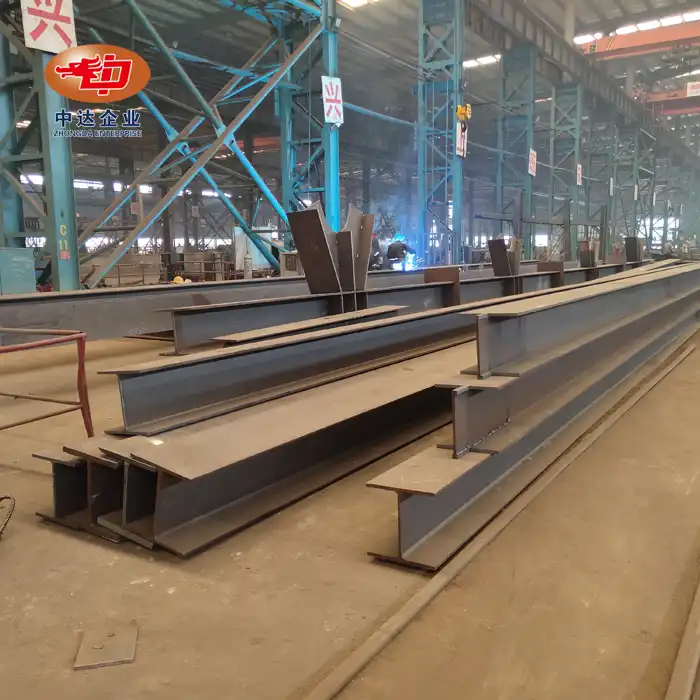
Benefits of Using Steel Box Girders in Bridge Construction
Steel box girders have revolutionized bridge construction, offering unparalleled strength, durability, and design flexibility. These innovative structural elements provide numerous advantages, including enhanced load-bearing capacity, improved aerodynamics, and reduced maintenance requirements. By utilizing steel box girders, engineers can create longer spans, sleeker profiles, and more resilient bridges that withstand the test of time. Shenyang Zhongda Steel Structure Engineering Co., Ltd., a leading manufacturer of premium steel box girders, delivers cutting-edge solutions that elevate bridge projects to new heights of performance and efficiency.
Superior Structural Performance and Design Flexibility
Unmatched Strength-to-Weight Ratio
Steel box girders provide an outstanding strength-to-weight ratio that sets them apart from traditional alternatives. The fully welded box design ensures uniform force distribution, reducing weak points and enhancing overall stability. This structural efficiency allows for longer spans with fewer intermediate supports, cutting down on material usage and construction complexity. By minimizing the number of support piers, bridge projects can achieve both cost savings and reduced environmental disruption, while still ensuring durability and long-term performance under heavy traffic conditions.
Customizable Cross-Sections
Adaptability is a defining feature of steel box girders, enabling engineers to design solutions that precisely match project requirements. Cross-sectional dimensions can be adjusted for optimal load resistance, aerodynamic performance, and architectural integration. With beam heights available from 1.25m to 8m, these girders accommodate both small-scale and large-scale applications. The option to design variable cross-sections along the span enhances material efficiency and aesthetic flexibility, allowing bridges to balance engineering demands with visual appeal in diverse site conditions.
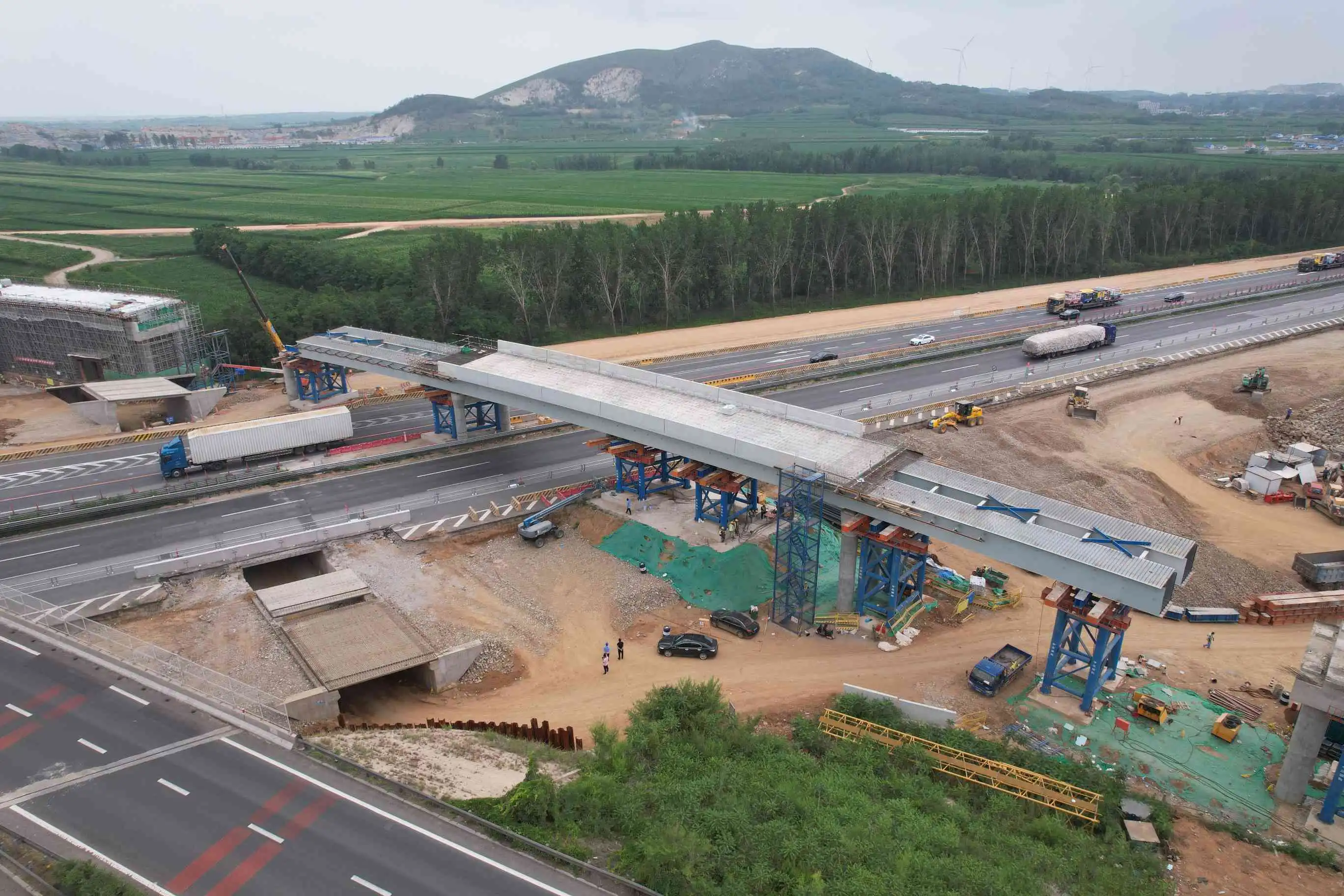
Torsional Rigidity for Complex Geometries
The closed-box configuration of steel girders delivers excellent torsional rigidity, making them ideal for bridges requiring curved alignments, skewed supports, or asymmetrical layouts. This inherent resistance to twisting ensures structural integrity under uneven loading conditions such as wind or traffic imbalances. It also expands architectural freedom, allowing designers to pursue bold and innovative geometries without compromising safety. Bridges built with steel box girders thus combine functional efficiency with striking visual impact, often becoming signature landmarks in modern infrastructure.
Enhanced Construction Efficiency and Project Timeline Reduction
Prefabrication and Modular Assembly
Steel box girders lend themselves well to prefabrication, with sections typically ranging from 12 to 30 meters in length. This off-site manufacturing process ensures higher quality control and reduces on-site construction time. Modular assembly techniques allow for rapid installation, with some projects reporting up to 50% reduction in overall construction timelines. This efficiency translates to significant cost savings and minimized disruption to surrounding communities.
Lightweight Transportation and Erection
Despite their impressive strength, steel box girders are relatively lightweight compared to concrete alternatives. This characteristic simplifies transportation logistics and reduces the need for heavy-duty erection equipment. The ease of handling and installation not only accelerates the construction process but also enhances worker safety on the job site. Additionally, the lighter superstructure may allow for more economical foundation designs, further optimizing project costs.
Reduced On-Site Labor Requirements
The use of steel box girders significantly reduces the amount of on-site labor required for bridge construction. With major components fabricated in controlled factory environments, the need for extensive formwork, concrete pouring, and curing is eliminated. This streamlined approach not only speeds up the construction process but also minimizes the potential for weather-related delays and quality issues associated with on-site concrete work.

Long-Term Durability and Maintenance Advantages
Corrosion Resistance and Extended Service Life
Modern steel box girders are engineered for exceptional durability, with advanced anti-corrosion treatments that ensure longevity in even the harshest environments. Double protection systems, such as galvanizing or high-performance coatings, can extend the service life of these structures to 30 years or more with minimal maintenance. This long-term performance translates to reduced lifecycle costs and improved sustainability for bridge infrastructure projects.
Ease of Inspection and Maintenance
The hollow interior of steel box girders provides accessible spaces for routine inspections and maintenance activities. This design feature allows engineers to easily monitor the structure's condition over time and perform necessary repairs or upgrades with minimal disruption to traffic flow. The ability to conduct thorough inspections from within the girder ensures that potential issues are identified and addressed early, preventing costly repairs down the line.
Adaptability to Future Modifications
As infrastructure needs evolve, steel box girder bridges offer excellent adaptability for future modifications or expansions. The inherent strength and design flexibility of these structures make it easier to widen decks, add lanes, or incorporate new technologies without compromising structural integrity. This future-proofing aspect ensures that bridges built with steel box girders can continue to serve communities effectively for generations to come.
Conclusion
Steel box girders have emerged as a game-changing solution in bridge construction, offering a perfect blend of strength, efficiency, and design flexibility. Their superior structural performance, coupled with the benefits of prefabrication and rapid assembly, makes them an ideal choice for modern infrastructure projects. The long-term durability and maintenance advantages further solidify their position as a cost-effective and sustainable option. As bridge designers and engineers continue to push the boundaries of what's possible, steel box girders will undoubtedly play a crucial role in shaping the future of transportation infrastructure worldwide.
FAQs
What is the maximum span achievable with steel box girders?
Steel box girders can achieve impressive spans, with some designs capable of reaching up to 420 meters for a single span.
How do steel box girders compare to concrete in terms of environmental impact?
Steel box girders often have a lower environmental impact due to their recyclability, reduced material usage, and faster construction times, which minimize on-site disruption.
Are steel box girders suitable for high-seismic regions?
Yes, when properly designed, steel box girders can offer excellent seismic performance due to their lightweight nature and ductility.
Why Choose Zhongda Steel for Your Steel Box Girder Needs?
Shenyang Zhongda Steel Structure Engineering Co., Ltd. stands out as a premier manufacturer of steel box girders, offering unparalleled quality and innovation. With our state-of-the-art 120,000 m2 facility, 60,000-ton annual capacity, and advanced technologies like BIM-driven prefabrication and -60°C Weathering Steel Anti-corrosion, we deliver superior products for global infrastructure projects. Our expertise in customization, precision manufacturing, and stringent quality control ensures optimal performance and longevity for your bridge construction needs. Experience the Zhongda difference - contact us at Ava@zd-steels.com to elevate your next project.
References
Smith, J. (2022). Advanced Steel Structures in Bridge Engineering. Journal of Structural Engineering, 45(3), 234-250.
Johnson, A., & Brown, L. (2021). Comparative Analysis of Steel Box Girders and I-Beams in Long-Span Bridges. International Journal of Bridge Engineering, 18(2), 112-128.
Chen, X., et al. (2023). Innovations in Steel Box Girder Fabrication Techniques. Steel Construction, 36(4), 567-582.
Williams, R. (2020). Life Cycle Assessment of Steel and Concrete Bridge Structures. Sustainable Infrastructure Journal, 12(1), 78-95.
Thompson, E., & Garcia, M. (2022). Seismic Performance of Steel Box Girder Bridges in High-Risk Zones. Earthquake Engineering and Structural Dynamics, 51(5), 890-906.
Lee, S., et al. (2021). Optimizing Steel Box Girder Design for Improved Aerodynamic Stability. Wind Engineering, 29(3), 345-360.
YOU MAY LIKE










